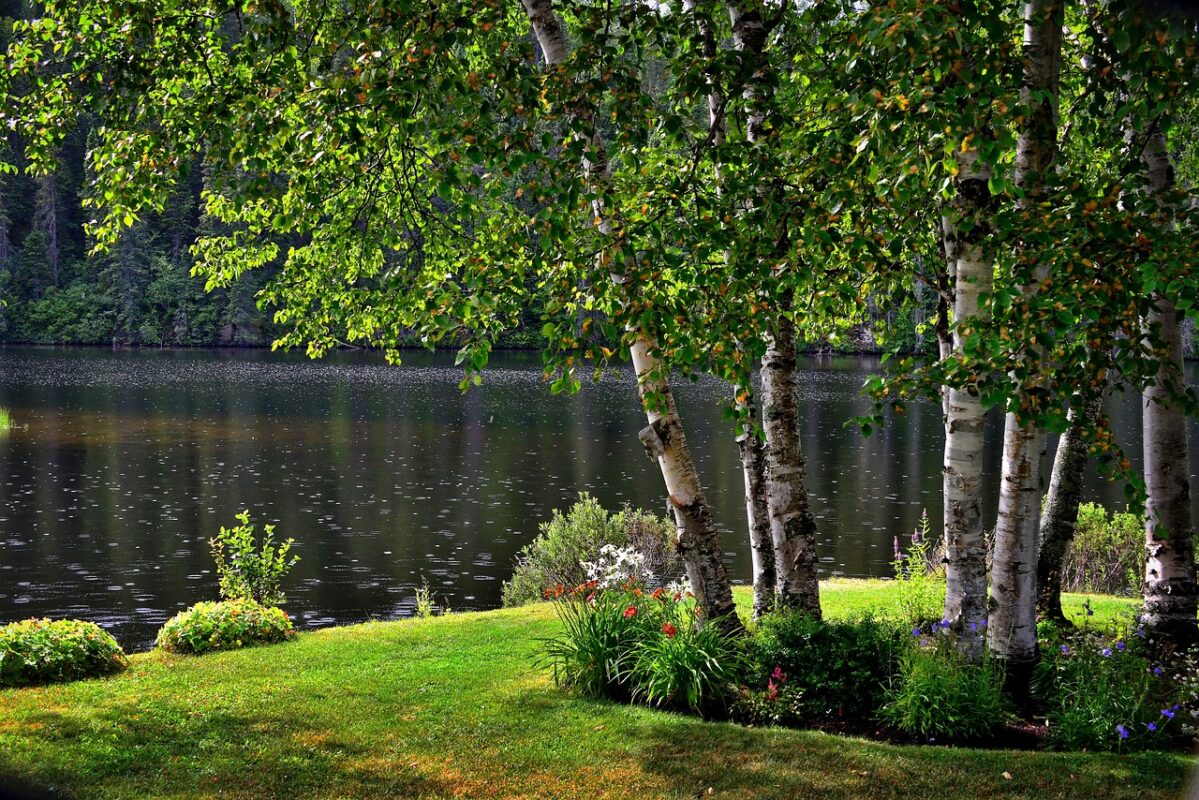IDENTIFICATION
Scientific name:
Betula alba
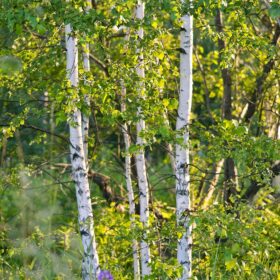
Italian common name:
White Betulla
Family:
Betulaceae
Origin:
Europe and Türkiye.
Environment:
widespread in the regions of Picetum, Fagetum and Castanetum, that is, with annual averages between 3 and 15° and minimums up to -20°. Widespread in Northern Europe.
Evergreen or deciduous:
deciduous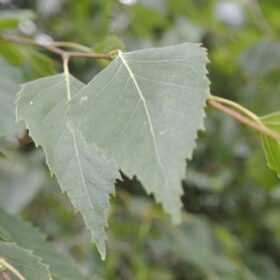
Toxicity:
Regarding herbal preparations, no toxic effects are reported in the literature at therapeutic doses, unless there is a specific subjective sensitivity to this plant. Do not take if you are allergic to Aspirin. Do not take in case of renal and/or cardiac insufficiency.
PLANT RECOGNITION
Height:
18-20 m.
Width (extension):
8 m.
Habit:
Arboreal. Upright with slender crown shape
Leaf:
from tapered triangular to rhomboidal, very decorative, small and toothed, light green in colour, sometimes fragrant when budding. They turn bright yellow in autumn.
Flower:
unisexual, male flowers of 3-6 cm of brown-purple colour, female of 1-2 cm of light green colour, both gathered in pendulous catkins.
Flowering: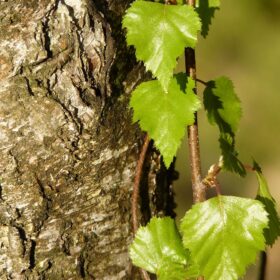
April – May
Fruit:
nucula – brown pendulous infructescences which peel off when ripe, releasing the winged fruits
Trunk:
Stem erect, straight and cylindrical, thin white with black spots and dots. Bark with a characteristic white colour, which however tends to flake and crack as the plant grows
Property:
The medicinal properties have been known since ancient times and in European folk medicine all parts of the birch are used to cure a long list of ailments. The decoctions of leaves and bark are applied topically to treat wounds, alopecia, cellulite, rheumatism, chilblains and dandruff. The infusions of buds and leaves against kidney stones, fever, hypercholesterolemia, arthrosis, flatulence and even as an anthelmintic.
The leaves are collected in summer and then dried in the shade, in a well-ventilated environment. The buds and sap collected in spring can also be used.
The charcoal that can be obtained from the combustion of birch wood is used as a natural remedy for meteorism and intestinal swelling.
Parfume: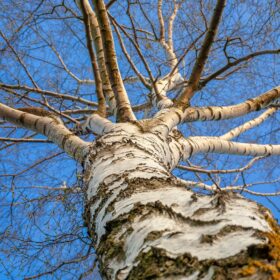
not
NEED
Maintenance:
very rustic plant. Low
Light Exposure:
prefers full sun although partial shade is recommended for the root area.
Soil type:
soft, medium-textured or sandy, fertile soils, rich in acid-reacting organic substance. It does not tolerate clay, limestone and compact soil.
Soil acidity:
lower than 6.5 pH
Italian climatic area:
Rather frequent in the mountains up to 2000 m. of altitude.
Need for water: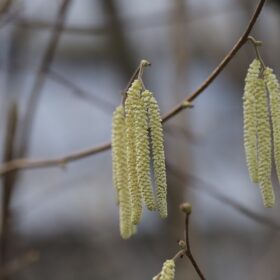
in a garden once a week in the hot season and once a month in the cold season.
A long drought can be a problem as well as the composition of the soil which helps drainage or heavy rains can cause compaction of the soil and consequent lack of oxygen.
Propagation:
Simply crumble the seeds in the palm of your hand and hold them on a seed tray with some potting soil.
Pruning:
Birch trees cannot be pruned, but since you have to make return cuts, you need to be careful because only the buds that have already formed grow, in fact there are no latent buds.
If intervention is necessary, it is done in autumn or winter, during vegetative rest.
Diseases:
having shallow roots, high temperatures can damage or kill them. A late spring or early frost can kill some branches. Or hot days in late winter and early spring can cause excessive moisture loss from buds and branches that cannot be compensated for by the roots due to the still frozen ground.
Organic mulch (10-15 cm), or companion planting of perennial herbs and shrubs at the base of the tree, will help keep the soil moist and fresh.
Pollarding can lead to attack by secondary invaders. An example is the birch borer
PARTICULARITY 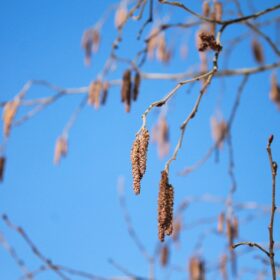
The name of the genus is a Latinism, from the Latin birch, itself of Gallic origin, connected with bitūmen.
In fact, the evidence exists archaeological that the pitch obtained through the pyrolysis of birch bark was already used in Prehistory as an adhesive to glue stone tips to wooden handles and rods and as chewing gum for its antiseptic properties given by its content of betulin and betulinic acid. It was possible to recover human DNA and oral bacteria from a sample of pitch chewed by a woman who lived in southern Denmark 5 thousand years ago.
Plants of this genus are known in Germanic countries under the names Birke in German and birch in English, from an Indo-European root which stands for “shining, white”.
the classic black and white bark is thus composed due to the presence of betulin granules,
The allergologico.it website recommends: Birch, a species present in many cities, in public parks and private gardens, is highly allergenic and responsible for seasonal oculo-rhinitis and asthmatic symptoms; it is therefore recommended to discourage its planting, especially in new living contexts.
The root system is superficial, therefore it requires frequent irrigation because it is unable to draw water from the deep layers. This last characteristic, unfavorable for cultivation in the plains in times of climate change and drought, is counterbalanced by a strong ability to colonize open land in competition with other species. It is therefore suitable for reforestation following catastrophic events (for example bark beetle attacks or strong storms) and the consolidation of mountain slopes.
If you would like more information on birch you will find a lot here
Annotations

It was called “the tree of wisdom” as the masters used the young branches of this tree for teaching purposes. In ancient times its sap was used as an effective remedy for kidney stones and for the well-being of the bladder. The bark was used to make cans and many other items.
Birch lumber is light, easily attacked by insects and fungi if not properly treated. Its mechanical characteristics make it ideal for the production of plywood for naval and aeronautical applications.
In the kitchen:
no use.
THE MONDO DEL GIARDINO ADVICE
Since planting in gardens is not recommended due to allergens, it will mean that we will organize beautiful walks in birch woods to enjoy its view.
Now on horseback! Work awaits us! Our new wonderful outdoor space is about to be born!
GOOD WORK and…if you have any questions, write to info@ilmondodelgiardino.com
Image sources: thanks to Pixabay and many thanks to Babs Müller for the social media photo, Alain Audet for the cover photo, Анатолий Стафичук, Dennis Buntrock, Julia Schwab, Tom, R N, Kartashova, Christina-KD and Karl Egger in closing.


